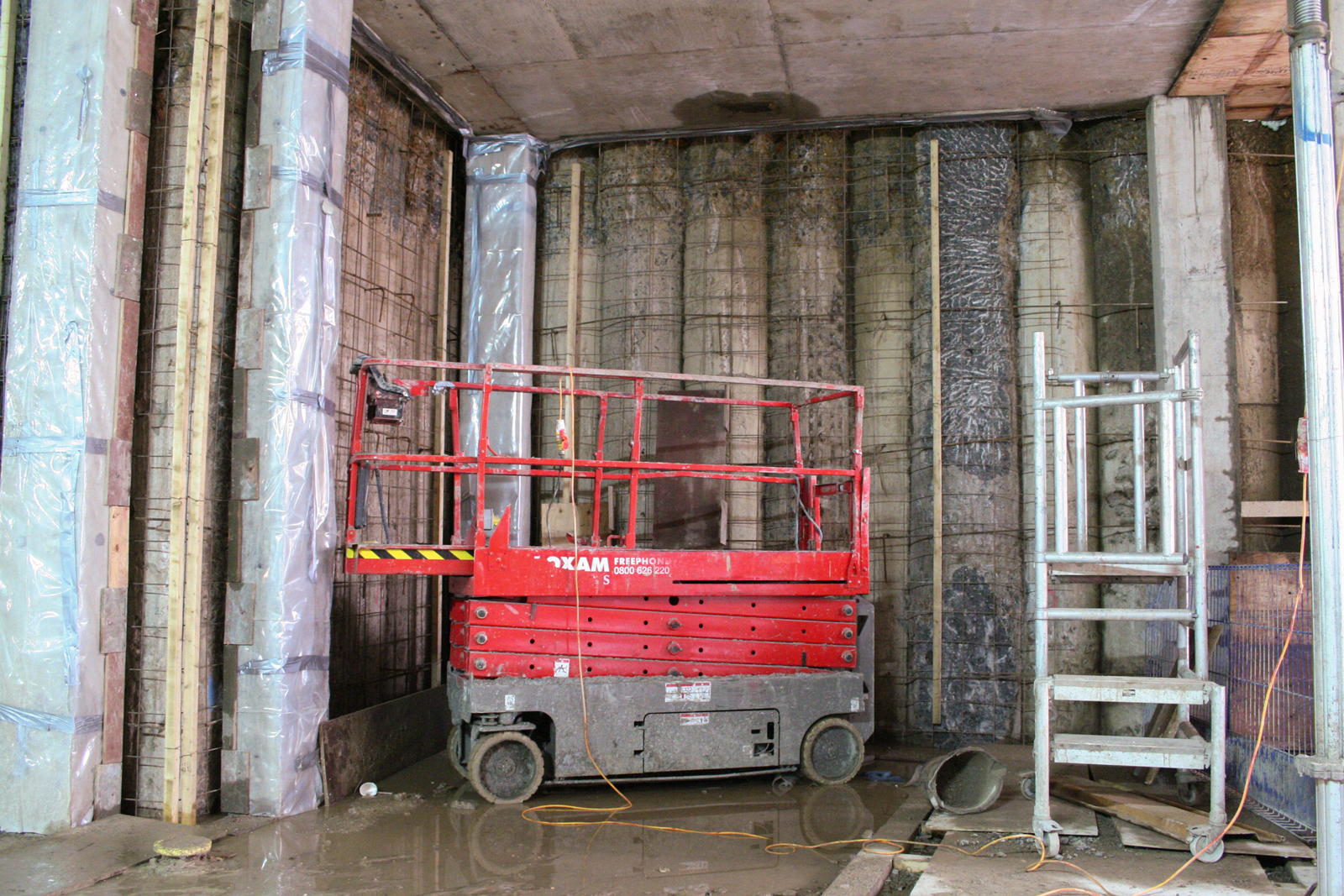The Rolls Building, London – Two-Storey Underground Car Park Waterproofed
Background

110 Fetter Lane (also known as The Rolls Building) is an eight-storey commercial building in the heart of central London, occupying the site formally known as Rolls and Arnold House.
The new building was designed by the international architect and design practice Woods Bagot. Sustainability was a key element in the design brief and the building has been awarded a BREEAM “Excellent” rating.
The building was 100% let before completion with 185,000 ft2 of the building’s 272,500 ft2 total area to be occupied by Her Majesty’s Court Service.
The Basement

The construction of such a large building on a site containing London clay requires very deep foundations. Due to the high land prices in the central London area it was decided to make use of this space by incorporating a two-storey basement area into the design. The basement was formed using secant piling that was faced with reinforced shotcrete.
Waterproofing the Basement Area
The main contractor, Carillion, appointed specialist waterproofing contractors, Cemplas to carry out the basement waterproofing work.
Whilst it is technically possible to achieve a watertight basement using secant piling alone, it is rarely achieved in practice. For this reason it was decided to line the basement walls and floor with the Oldroyd cavity drainage membrane system. This comprises of a studded membrane that is applied to the walls and floor of the basement. Special Oldroyd tapes are used to seal all joints and overlaps. The system is designed to divert any water ingress entering the basement to sumps and discharge points.
In total approximately 6300 m2 of Oldroyd cavity drainage membranes were installed on the project. The 20 mm-studded Oldroyd Xv 20 membrane was used to cover the floor of the lower basement area due to its high flow capacity. On the walls, the 6 mm-studded Oldroyd Xv Black was chosen due to its minimal environmental impact. Using multi-layer technology, the membrane contains a core of recycled material. This permits a high overall recycled content without compromising product performance. The Xv Black membrane was fixed to the walls using special self-sealing Oldroyd sealing plugs.
Certain sections of the basement structure (e.g. service duct channels, pile caps, and manhole inspection points) were waterproofed using Vandex cementitious waterproofing slurries, as these offered a more appropriate waterproofing solution for these detailed areas. Waterproofing products used from the Vandex range included Vandex Super, Vandex Unimortar 1, and Vandex BB75. In total, approximately 2300 m2 of the basement area was waterproofed using Vandex waterproofing slurries.

